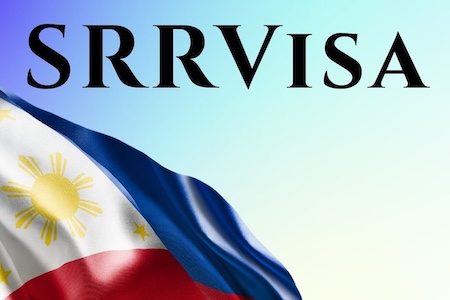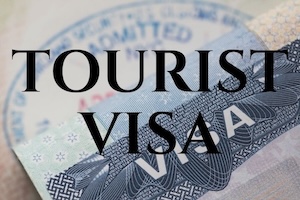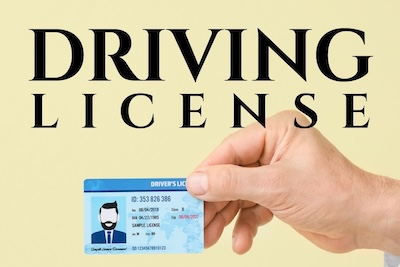
Living in the Philippines: A Practical Guide for Expats and Long-Term Visitors
The Philippines is a great place to call home, and after a lifetime of working, I made some choices and headed out for an extended stay. I now live here full time. Of course, it has its challenges — no place is perfect — but if you’re willing to adapt, learn how things work, and let go of certain expectations, life here can be incredibly rewarding.
Relocating can be stressful, of course. Looking back, the best strategy I had — if you can call it that — was to trust in good luck and lean into trial and error method at every opportunity. From visas, banking, and hospitals to costs, driving licenses, and even buying a vehicle, I was pretty much all-in with a simple attitude: “It’ll be OK — let’s go with this.”
Of course, in nine out of ten cases, it wasn’t OK. After all, this is the Philippines — and things don’t always go the way you expect. Still, I managed to cross the finish line each time with my pride mostly intact… even if a little battered along the way.
This Living in the Philippines hub brings together some of the lessons and experiences I’ve picked up along the way — not as a blueprint, but as support for anyone trying to make sense of life here. What follows is a closer look at the practical side of things — the parts that take time to figure out, but matter every day once you’re actually living here.

Table of Contents
Click a topic below to jump directly to that section of the hub-page.
1.Long-Term Living Destinations
2.Cost of Living in the Philippines
3.Money, Banking & Financial Life
4.Visa Options & Residency Paths
6.Life Essentials & Everyday Living
Join Our Monthly Newsletter
Stay connected with Live Life The Philippines — your direct link to what’s changing and developing across the islands. Get instant access to our Retiree & Expat Budget Planners, plus regional updates, new guides, diving insights, and resources for living long-term in the Philippines.

Get the latest insights from across the Philippines — regional updates, living guides, diving reports, and culture in focus.

In Focus – Living in the Philippines
Our articles cover a broad range of real-life topics — whether you’re already living here or still planning your move. From destinations, cost of living, visa options, and healthcare to everyday essentials like banking, transport, and getting things done, it’s all written from experience — the kind you only get by actually living here.
Destinations

From beach towns to mountain hideaways, find the best places to live based on lifestyle, climate, and cost of living.

A place that’s well worth considering if you are looking for a place to call home.
Cost of Living

How much do you realy need to live long term in the Philippines, find out the truth

Is month $1000 really enough to live in the Philippines? fact or fiction, the step by step budget guide.
Money, Banking & Financial Life

Find out how to move your money safely and cost-effectively to the Philippines — and which international transfer options work best.

How to opening a local bank account in the Philippines — and what to expect with requirements, access, and day-to-day use.

Set up and use GCash with ease — a smart solution for daily spending without a local bank account.
Visa Options and Residency Paths for Foreigners

Discover practical visa routes for expats, retirees, and long-stay visitors planning life in the Philippines.

Explore the SRRV, a long-term visa designed for retirees seeking permanent residency and flexible entry to the Philippines.

Understand visa lengths, extensions, and key rules for long-stay visitors to the Philippines.
Healthcare and Insurance for Expats in the Philippines

Learn how to manage your prescriptions as an expat — what to bring, what’s available locally, and how to plan for emergencies.

Understand how PhilHealth works for expats — who can join, what it covers, and how to enroll.

Compare private, public, and international insurance options to protect your health in the Philippines.
Practical Life, Essentials, and Everyday Living

Understand brownouts from energy supply to practical ways to prepare, when the power goes off.

Understand the Seasons, the Science and the Impact

Discover which visas allow expats to work in the Philippines, the permits required, and how taxes apply in 2025.

Availability, Choices, and Everyday Alternatives for Expats.

A step-by-step guide to converting your license or applying fresh — plus what to expect at the LTO.

From buying to LTO paperwork — a 2025 guide for expats on owning a car or motorbike in the Philippines.

Frequently Asked Questions
How much does it cost to live in the Philippines as an expat?
Monthly living costs vary by location and lifestyle, but many expats can live comfortably and have a great lifestyle on $1,700 to $2,300 a month. Budget for rent, utilities, food, transport, healthcare, and some travel or leisure. Our cost of living guide offers real figures based on firsthand experience.
What visa should I use to stay long-term in the Philippines?
The most common long-stay options are the SRRV for retirees and the tourist visa with regular extensions. Other visas include spouse (13a), investor (SIRV or SVEG), or Balikbayan entry for returning Filipinos and their families. Your visa path depends on your plans, finances, and timeline.
Which areas in the Philippines are best for expats to live?
Popular expat destinations include Dumaguete, Cebu City, Tagaytay, Baguio, and parts of Panglao or Palawan. Each region has pros and cons in terms of infrastructure, cost, climate, and access to services. Choosing the right location depends on your lifestyle, interests, and health needs.
What kind of healthcare can expats access in the Philippines?
Expats can access public healthcare via PhilHealth, but many rely on private hospitals and insurance for better care. Private plans vary widely in coverage and cost. Some expats also use international policies. It’s important to understand how the system works before you need it.
How do expats manage money and daily payments in the Philippines?
Most expats use a mix of local bank accounts, GCash, and international transfers for daily spending. Services like Wise, Revolut, or direct bank-to-bank transfers can reduce fees. Our guides walk through how to set these up and avoid common banking pitfalls.
Support Live Life The Philippines
If this site has helped you, consider buying a coffee to show your support. It’s built from firsthand experience and offered freely to anyone exploring life in the Philippines.

This project is 100% independent, ad-free, and powered by curiosity (and coffee). If you're enjoying the work, I'd love your support.
Note – Buy Me a Coffee was created for people who want to support the work of independent creators. It offers secure, encrypted checkout with Apple Pay, Google Pay, and other trusted methods — no account needed.

Join Our Monthly Newsletter — Real Guides and Insights from the Philippines
Instant Access: Retiree & Expat Budget Spreadsheet
Plan your income and expenses for living long-term in the Philippines with this easy-to-use tool — compatible with Google Sheets and Microsoft Excel.
Subscribers receive it immediately in the welcome email.
Every month, receive exclusive updates from around the Philippines:
National & Regional Updates – Key developments from across the country — covering travel, infrastructure, weather, and policy changes that shape daily life and long-term living.
Living in the Philippines – New guides, toolkits and real insight into expat life — from visas and cost of living to healthcare, everyday living, and what it’s really like to settle here long-term.
Dive the Philippines – The latest dive articles and firsthand insights from across the Visayas — where I’ve been diving, what I’ve seen, and how the conditions are shaping up.
Filipino Society – Articles exploring culture, values, and community — understanding how the Philippines really works, and what it means to be part of local life.
Get firsthand updates and insights on living long-term in the Philippines — delivered straight to your inbox each month.
*We respect your privacy. Your email is safe with us and will only be used to send our monthly newsletter. Every subscriber receives our free Excel Budget Planner as a welcome gift. We use Mailchimp for secure, reliable delivery. You can unsubscribe at any time.*
Back to Top